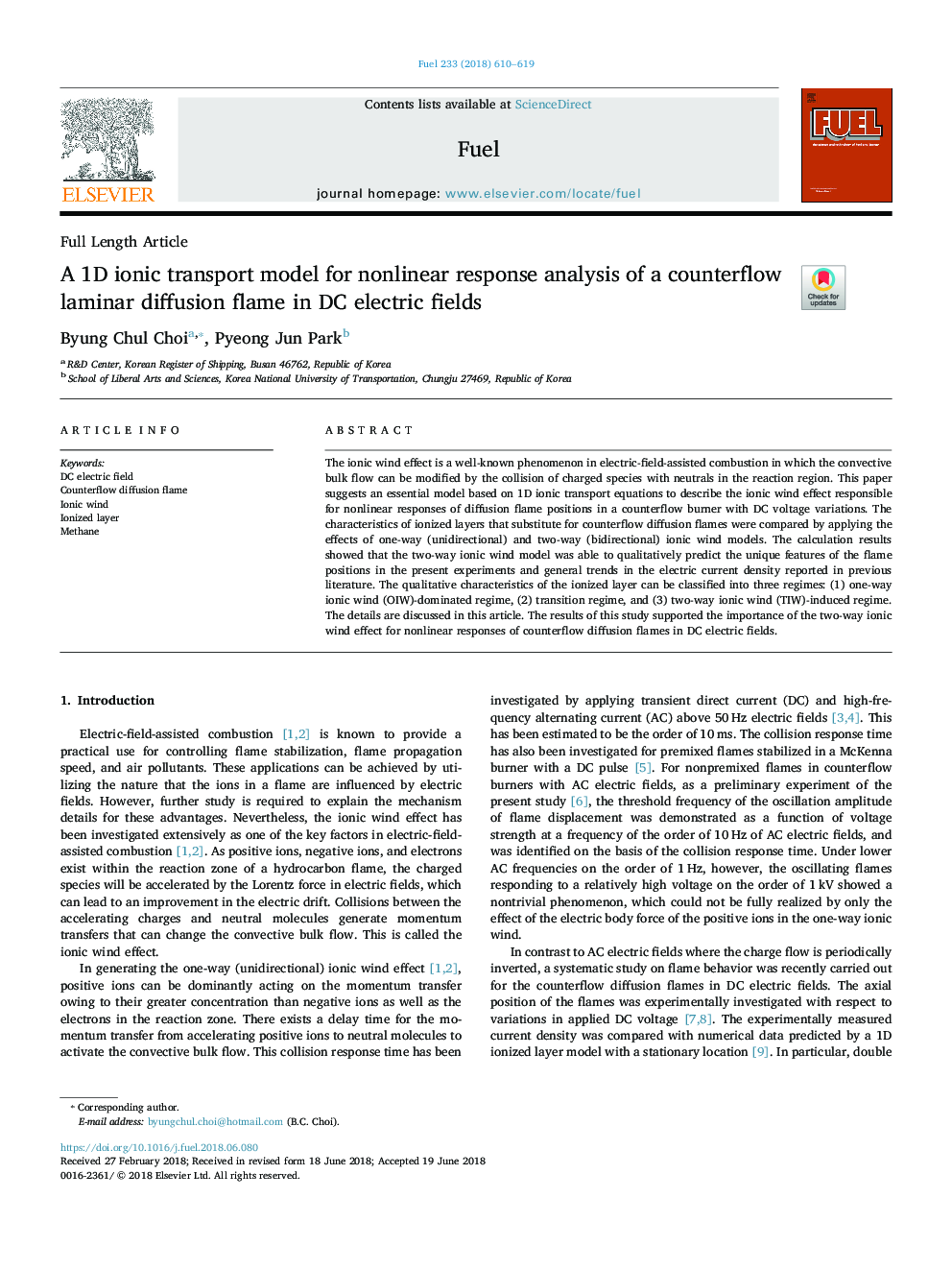| Article ID | Journal | Published Year | Pages | File Type |
|---|---|---|---|---|
| 6630280 | Fuel | 2018 | 10 Pages |
Abstract
The ionic wind effect is a well-known phenomenon in electric-field-assisted combustion in which the convective bulk flow can be modified by the collision of charged species with neutrals in the reaction region. This paper suggests an essential model based on 1D ionic transport equations to describe the ionic wind effect responsible for nonlinear responses of diffusion flame positions in a counterflow burner with DC voltage variations. The characteristics of ionized layers that substitute for counterflow diffusion flames were compared by applying the effects of one-way (unidirectional) and two-way (bidirectional) ionic wind models. The calculation results showed that the two-way ionic wind model was able to qualitatively predict the unique features of the flame positions in the present experiments and general trends in the electric current density reported in previous literature. The qualitative characteristics of the ionized layer can be classified into three regimes: (1) one-way ionic wind (OIW)-dominated regime, (2) transition regime, and (3) two-way ionic wind (TIW)-induced regime. The details are discussed in this article. The results of this study supported the importance of the two-way ionic wind effect for nonlinear responses of counterflow diffusion flames in DC electric fields.
Related Topics
Physical Sciences and Engineering
Chemical Engineering
Chemical Engineering (General)
Authors
Byung Chul Choi, Pyeong Jun Park,
